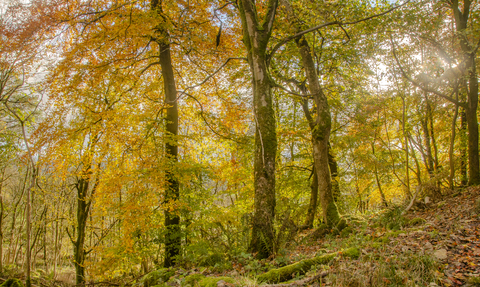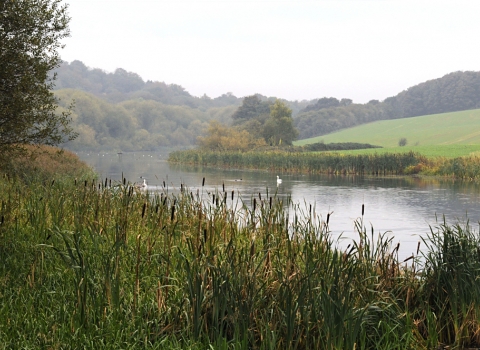Karen Mcdiarmid
Maltby Low Common Nature Reserve
Location
Know before you go
Dogs
When to visit
Opening times
Open at all times. We commend a half day visit, or for a longer day, walk to Far Common or try nearby Roche AbbeyBest time to visit
March to SeptemberAbout the reserve
Buzzing and bustling with insect life
If you know your calcareous grassland species from your acid and neutral grassland species, or you’re keen to learn, there’s no finer place to compare these side by side. And if you don’t really care what all that means but like seeing how different plants grow in different places, and enjoy seeing an array of beautiful flowers, then look no further than the steep limestone bank, flat grassland, and wetter and drier areas of Maltby Low Common.
It's part of a network of commons on the south-east side of Maltby, and you can enjoy a circular walk of around 2 miles to Maltby Far Common. Both are great for grassland flowers in later spring and summer and host a wide variety of insects – well over 400 species have been recorded, including many species of butterfly and moth, such as dark green fritillaries, brimstones, orange-tips, small coppers, walls, heaths, cinnabars and silver Ys. Just over the railway line, Maltby Wood is full of woodland flowers in the spring, and can be incorporated as part of a longer walk.
Where the wildflowers grow
On the south-west part of the common, typical limestone grassland species grow, including the declining grass-of-Parnassus, field scabious and small scabious. The flat area below the bank includes species more typical of fen meadow.
Other plants to find on the reserve include marsh valerian, mat grass, tufted hair-grass, heather, pepper saxifrage, meadow thistle, sneezewort, lousewort and aspen, along with glaucous, oval and carnation sedges. From June, look for common spotted orchids flowering in abundance.
In spring, cuckoos, whitethroats and garden warblers join resident species including buzzards, kestrels and barn owls, with parties of foraging tits and thrushes in the winter
Contact us
Environmental designation
About
Anyone wanting to compare the floristic diversity of calcarious, acid and neutral grassland should certainly pay Maltby Low Common a visit. With all three grassland types in close proximity, this site provides a unique opportunity.
Maltby Low Common has a wide variety of soil types, giving rise to dry grassland and fen meadow which provides an excellent home for both wildflowers and insects. The south part of the site has typical limestone grassland species including grass of Parnassus, field scabious and small scabious. The flat area below the bank includes species more typical of fen meadow.
Other plants to be found include marsh valerian, mat grass, tufted hair-grass, heather, pepper saxifrage, meadow thistle, sneezewort, lousewort and aspen. Sedges include glaucous, oval and carnation. Beautiful common spotted orchids flower in abundance from early June. The site is rich in insects; well over 400 species have been recorded to date. Many species of butterfly and moth can be seen including brimstone, orange-tip, small copper, wall, heath, cinnabar and silver. Birds to be seen include buzzard, kestrel, turtle dove, cuckoo, barn owl, whitethroat and garden warbler. In the winter, parties of foraging tits and thrushes can be seen.
Seasonal highlights
- Spring: Birds; Whitethroat; Garden warbler; Invertebrates; Orange-tip Plants; Wood anemone
- Summer: Plants; Grass-of-Parnassus; Tufted hair-grass; Pepper saxifrage; Meadow thistle; Sneezewort; Meadowsweet; Devil's-bit-scabious
- Autumn: Fungi
- Winter: Birds; Long-tailed tit
History
The site is owned by the Sandbeck Estate, with Sandbeck house very nearby. It was opened as a nature reserve in 1971 and Yorkshire Wildlife Trust has managed the site since the 1980s, and now work with others through the Maltby Commons Management Committee to influence management of the adjoining and nearby sites.
There are no 'commoners' (people who hold common rights) left, although the site is still technically a common. But the site is regularly used by local Maltby reisdents for a walk in wildlife.
Directions
Public transport
Buses run from Doncaster to Maltby. From Maltby the nature reserve is a 20 minute walk.
By car
Approximately one mile south east of Maltby. From the M18 Junction 1 take the A631 to Maltby. Then take the right fork, the A634 Blyth road. After passing Maltby Craggs School, turn left at the next signpost, then right after 100 metres. Pass the Sports Ground and park cars near the corner where the road turns left into the Birks Hold housing estate. Proceed on foot over the railway bridge, along the unsurfaced track and descend to the Low Common.
Nearby

The autumn colours were even more beautiful when the sun came out
Photo Credit - Telling our Story Volunteer, Sara






